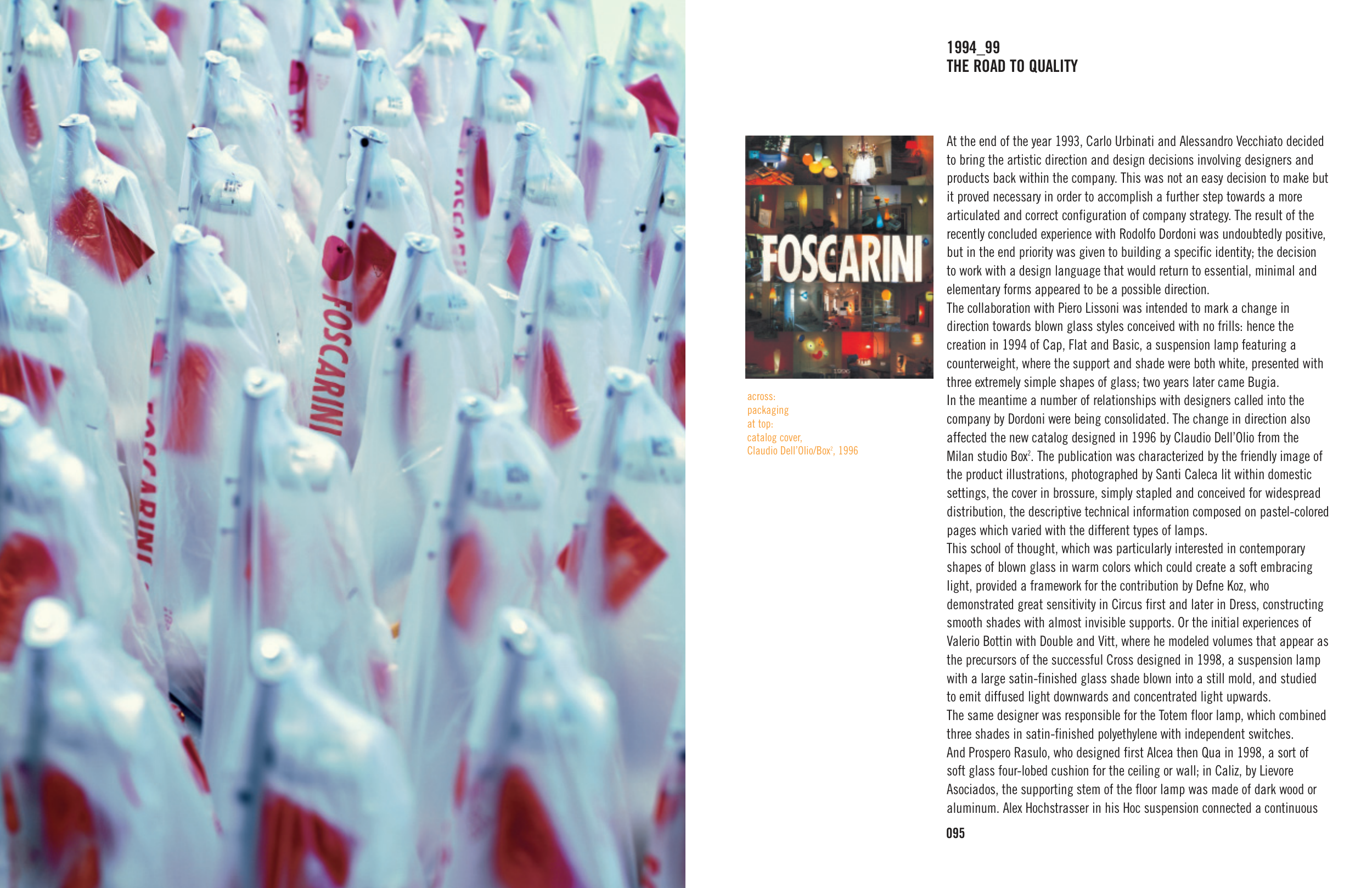095
1994_99
THE ROAD TO QUALITY
At the end of the year 1993, Carlo Urbinati and Alessandro Vecchiato decided
to bring the artistic direction and design decisions involving designers and
products back within the company. This was not an easy decision to make but
it proved necessary in order to accomplish a further step towards a more
articulated and correct configuration of company strategy. The result of the
recently concluded experience with Rodolfo Dordoni was undoubtedly positive,
but in the end priority was given to building a specific identity; the decision
to work with a design language that would return to essential, minimal and
elementary forms appeared to be a possible direction.
The collaboration with Piero Lissoni was intended to mark a change in
direction towards blown glass styles conceived with no frills: hence the
creation in 1994 of Cap, Flat and Basic, a suspension lamp featuring a
counterweight, where the support and shade were both white, presented with
three extremely simple shapes of glass; two years later came Bugia.
In the meantime a number of relationships with designers called into the
company by Dordoni were being consolidated. The change in direction also
affected the new catalog designed in 1996 by Claudio Dell’Olio from the
Milan studio Box2. The publication was characterized by the friendly image of
the product illustrations, photographed by Santi Caleca lit within domestic
settings, the cover in brossure, simply stapled and conceived for widespread
distribution, the descriptive technical information composed on pastel-colored
pages which varied with the different types of lamps.
This school of thought, which was particularly interested in contemporary
shapes of blown glass in warm colors which could create a soft embracing
light, provided a framework for the contribution by Defne Koz, who
demonstrated great sensitivity in Circus first and later in Dress, constructing
smooth shades with almost invisible supports. Or the initial experiences of
Valerio Bottin with Double and Vitt, where he modeled volumes that appear as
the precursors of the successful Cross designed in 1998, a suspension lamp
with a large satin-finished glass shade blown into a still mold, and studied
to emit diffused light downwards and concentrated light upwards.
The same designer was responsible for the Totem floor lamp, which combined
three shades in satin-finished polyethylene with independent switches.
And Prospero Rasulo, who designed first Alcea then Qua in 1998, a sort of
soft glass four-lobed cushion for the ceiling or wall; in Caliz, by Lievore
Asociados, the supporting stem of the floor lamp was made of dark wood or
aluminum. Alex Hochstrasser in his Hoc suspension connected a continuous
across:
packaging
at top:
catalog cover,
Claudio Dell’Olio/Box2, 1996


